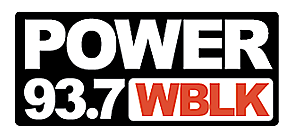
Money Minute: Get Tips and Resources for Getting Your Security Deposit Back from Your Landlord
If you are a renter, getting your security deposit back is very important, especially if you are becoming a home owner. Yasmin Young, host of the 2 to 6 Takeover (M-F, 2-6 PM) and Kawanza Humphrey, VP of KeyBank, have resources and tips to help you get it back! Get all the info here!
Getting A Security Deposit Back
Tips For Getting Your Security Deposit Back From Your Landlord
• If you’re a renter, the first costs that probably come to mind when budgeting are your rent, your utilities and other monthly bills. But there’s a one-time cost associated with renting that’s easy to forget: the security deposit required when you move into a new place. That’s usually a hefty chunk of change, so you want to make sure you’ll get your full security deposit refund when it’s time to move out.
• Maintain Your Space: It doesn’t take too much work to keep your home clean while you live in it — and doing so will help make sure that no lasting damage keeps you from getting your deposit back. Cleaning up on a regular basis means vacuuming, dusting and wiping down or scrubbing surfaces, plus acting fast with messes, like spills, to avoid set-in stains.
• If you run into a problem with your rental, reach out to your landlord right away. Homes and apartments need regular maintenance, and it’s your landlord’s responsibility to take care of standard and routine repairs. If you address issues immediately, they’ll likely fall into that “standard and routine” category. But ignoring or trying to hide problems can mean that you won’t see your security deposit refund later.
• Take Pictures and Meet With Your Landlord: Once you’ve moved all your belongings and furniture out of your home, do a final walk-through of the space. Take pictures and document how you left the home, in case you don’t get back what you think you should. Ideally, do this with your landlord to show them what you’ve cleaned or replaced. This is a good time to ask if there’s anything else you need to do to get your security deposit back before you leave.Additional online resources from KeyBank:
(This material is presented for informational purposes only and should not be construed as individual tax or financial advice. Please consult with legal, tax and/or financial advisors. KeyBank does not provide legal advice. KeyCorp 2017. KeyBank member FDIC.)
Combining Finances
Combining Bank Accounts When You Move in Together
• Combining bank accounts is an option many unmarried couples consider when they’re living and managing their finances together.
• A July 2015 survey by Credit Karma found that half of married millennials and a third of baby boomers had either fully or partially combined their finances with their spouse before they married.
• If you’re thinking of moving in with your partner and sharing household expenses, it’s important to have a conversation about how that arrangement will work. A joint bank account is one way to merge your finances, but there are several things to consider before deciding if it’s the right solution for you and your significant other.
• Every couple’s situation is unique, but it’s helpful to know about these three common ways to handle banking and bill paying when you’re sharing household expenses:
o Keep your bank accounts totally separate, dividing up the payment of bills or reimbursing each other for half of your shared expenses — or whatever portion you agree is fair.
o Open a joint bank account to cover shared expenses, while maintaining separate accounts for personal spending.
o Completely merge your finances into a single joint bank account.
• Having a frank talk about your money management habits — and about how your financial goals and spending priorities fit together — will help you avoid the potential pitfalls of joining your money with your partner’s.
• Decide on the process you’ll use to work through any financial conflicts. Discuss which types of purchases will require agreement beforehand, and stick to that rule. Don’t wait until the monthly bank statement arrives to try to explain a big-ticket impulse buy to your partner.Additional online resources from KeyBank:
(This material is presented for informational purposes only and should not be construed as individual tax or financial advice. Please consult with legal, tax and/or financial advisors. KeyBank does not provide legal advice. KeyCorp 2017. KeyBank member FDIC.)
Budgeting for Vacation
How to Stick to Your Vacation Budget
- According to Entrepreneur, the average American family of four spends around $4,580 annually on vacations. That’s a hefty chunk of change, and the last thing you want to do is stress over expenses instead of enjoying your well-earned time off.
- Planning is key
- Research: Get an idea of restaurant options at your destination and approximate price ranges. Don’t overlook the authentic, delicious and affordable meals you can find at places like street vendors and grocery stores. Do the same for attractions. You may find some of your “can’t-miss” activities become “not worth it.” Look up free museum days and see if attractions offer discounted admissions for late-in-the-day visitors.
- Build Room for Spontaneity: When you go on vacation, you inevitably find something you didn’t plan for: a can’t-live-without souvenir or an experience you didn’t see in your research. IndependentTraveler.com has a travel budget calculator that outlines various expenses that you may not have anticipated. Budget some cash in a “miscellaneous” category or pad a category, such as food, where you may overspend.
- Know the Exchange Rate: Search online to get an idea of exchange rates. Knowing, for example, that 100 U.S. dollars is roughly equal to more than 2,500 Czech koruna can help you avoid taking too much or too little money from an ATM. You can also exchange dollars for foreign currencies before you leave and divvy money up for food, activities and transportation costs.
Additional online resources from KeyBank:
(This material is presented for informational purposes only and should not be construed as individual tax or financial advice. Please consult with legal, tax and/or financial advisors. KeyBank does not provide legal advice. KeyCorp 2017. KeyBank member FDIC.)
Buying a Home - Saving for a Down Payment
Tips For Saving For A Down Payment And Purchasing A Home!
• A recent American Banker Association survey found that only 34 percent of respondents said they felt confident they understand the mortgage application process.
• The survey also showed 61 percent of respondents still prefer personal meetings with their lender to complete mortgage applications as opposed to just using online resources.
• The first step is working with a mortgage loan officer to look at income and expenses and know what you can afford, including a down payment, taxes and insurance, closing costs.
• Get pre-qualified for a mortgage. Not only will this tell you how much you can spend, but getting pre-qualification helps show sellers you are a serious buyer.
• Many lenders, including KeyBank, have first-time homebuyer programs available with lower down payment requirements. Beyond these programs, a mortgage loan officer will be able to answer your questions about mortgages and down payments.
• For a home purchase, you can borrow against your 401(k). In other words, you can borrow money from your retirement savings and put it toward your home purchase. As you repay the loan, you’ll be putting money back into your own pocket – not the lender. The typical repayment period on these loans is five years.
• Review your monthly budget for places where you can trim your costs. Our tool HelloWallet can help you see exactly where your money is going. For example, are you always eating out? Or buying a premium coffee (or maybe two) every day? Once you’ve committed to saving for your down payment, it’ll be a little easier to trim those extra costs.
• Saving for your down payment takes time and planning. Break down your savings goal into manageable amounts and set a timeline so that you can track your progress.
• Treat your down payment goal as importantly as you treat other bills, like rent, utilities or life insurance. In other words, create a “down payment bill” for yourself and pay yourself every month.
Additional online resources from KeyBank:
Mortgage Options
6 tips for saving for a down payment
4 first-time homebuyers’ mortgage loan mistakes – and how to avoid them
9 steps to close: What to expect from the homebuying process
Improve your credit score now with these tips(This material is presented for informational purposes only and should not be construed as individual tax or financial advice. Please consult with legal, tax and/or financial advisors. KeyBank does not provide legal advice. KeyCorp 2017. KeyBank member FDIC.)
Buying a Vehicle - Buying and Maintaining
Budgeting For Buying And Maintaining A Car
· By knowing what you can realistically afford, you can set a car budget that will help you avoid overpaying for a car and getting yourself into financial trouble.· The first and easiest step in setting a car budget is to determine what your income and expenses are. Remember, you are going to want to base your income on what you actually take home (after taxes) and not your gross pay.
· Much of your budget will be dictated by your personal circumstances. If you already have a lot of expenses—such as a mortgage or rent, student loans, food, etc.—there isn't much you can cut from your budget.
· If, on the other hand, you have expenses you can and are willing to cut, like your entertainment or vacation budget, then you can afford more for a car.
· The next, and much more difficult step, is to determine how much you can afford and want to spend on a new car. Just because you can afford an expensive car doesn't mean you should buy one. You may have other priorities to consider, or may want to account for unexpected expenses down the road.
· The general rule of thumb is that you shouldn't spend more than 15% of your monthly income on your car loan payments—and some even say that is generous.
· Unless you are very comfortable with debt, the larger the down payment you can make, the better. It will cost you less in the long run because there will be less interest to pay.
· Shoot for a 20% down payment if you can.
· Budget for the following recurring costs: maintenance, car insurance, gas, inspections, state registration renewal and parking.
Additional online resources from KeyBank:
(This material is presented for informational purposes only and should not be construed as individual tax or financial advice. Please consult with legal, tax and/or financial advisors. KeyBank does not provide legal advice. KeyCorp 2017. KeyBank member FDIC.)
College - Budgeting & Saving
Make Sure Budget Basics Are Part Of College-Bound Checklist
All across the country, college-bound students and their families are running through the move-in day checklist:
Sheets and towels? Check.
In-room refrigerator? Check.
Shower caddy? Check.First-year-away-from-home-budget – Probably not even on the list.
It’s no secret higher education is an increasingly expensive investment that can affect students’ and their families’ personal finance, starting with saving for college through to paying off student loans.
Most families actively involved with helping to pay for college have already come to terms with the big-ticket items tuition and fees. (According to the College Board’s most recent survey of college costs, tuition and fees at a two-year public school average $11,520. That tab soars to $45,370 for private four-year college.)
But late-stage sticker shock can still set in as every day miscellaneous expenses start adding up, with the average student spending about $5,000 on additional expenses:
* Laptop or tablet, with accompanying software updates.
* Everyday essentials such as laundry and cell phone service.
* Entertainment, whether it’s coffee-shop caffeine and snacks to fuel an all-nighter (and dorm meals missed while recovering from same) to on-campus shows to off-campus adventures
* Travel to and from home
KeyBank has the following tips for the college-bound, their parents and others who are helping them along the way:
The first step is taking a hard look at all anticipated expenses. Then, break those costs out between needs and wants.
The “needs” expense column includes costs such as books and supplies, mandatory fees such as lab and dorm fees, travel expenses for trips home during the school year.
The “wants” expense column can quickly fill up with small items – the occasional meal out, the occasional trip to the movies, passes to school sporting events – to more expensive ventures such as social group membership fees or accompanying a friend on a spring break vacation.
The goal for the college-bound and their families is not limiting spending on “needs” and do without things someone might want. Building relationships is a big part of the college experience, and building relationships starts with shared experiences such as social events, impromptu off-campus adventures and the like.
The bottom line is this: Think through what it will cost to cover the things your college-bound child will need. Drill down into the details so there are no fiscal surprises. Then have a frank conversation with your college-bound child about what he or she can spend on items in the “wants” column.
Doing a deep dive into wants and needs is a first step toward financial wellness. At KeyBank, financial wellness means having the confidence to dream big as the result of knowing your current financial situation, your financial goals and having access to tools and insight to attain those goals. KeyBank’s financial wellness program, powered by industry leading personal finance software, helps clients to take control of their finances.
Armed with complete and realistic financial picture, families can develop budget and spending plans to help the college-bound family member to manage their money.
Budget basics
When you think about it, there’s no real difference between a real-world budget and one for college students. Budgets are based on income and expenses – and the occasional incentive for boosting the former and sticking to the latter.
The key to a successful budget, especially for a college student, is to keep it simple, realistic and goal oriented. First, review expenses – what your student needs and what your student might want. Then, determine available income, which can be money from summer jobs, graduation gifts, a parent-provided regular allowance or proceeds from a part-time job on campus or in the community.
Finally, add in savings goals so students learn the value of exercising restraint on today’s spending to create future financial flexibility.
For example, that student budget could include a savings incentive – a special senior year vacation, a new (or new-to-them) vehicle or gift cards to help the new college grad settle into their first post-college apartment.
Yes, saving a significant amount of money can seem insurmountable. At KeyBank, our experience is small, consistent savings efforts really do add up over time. Saving $5 a week every week for four years is more than $1,000 tucked away at graduation. Parents could help support the savings incentive by matching their students’ savings goal.
Remember, the primary purpose of college is to help students gain an education that will prepare them for a fulfilling career full of great earning potential. By helping college-bound offspring make strong financial decisions throughout their college experience, parents can have peace of mind knowing they have given their college student a head start on financial wellness.
Additional online resources from KeyBank:
Making College More Affordable
Three Hidden Costs of College
College Savings Account, 529 College Savings Plan
College Savings Calculator(This material is presented for informational purposes only and should not be construed as individual tax or financial advice. Please consult with legal, tax and/or financial advisors. KeyBank does not provide legal advice. KeyCorp 2017. KeyBank member FDIC.)
More From 93.7 WBLK









